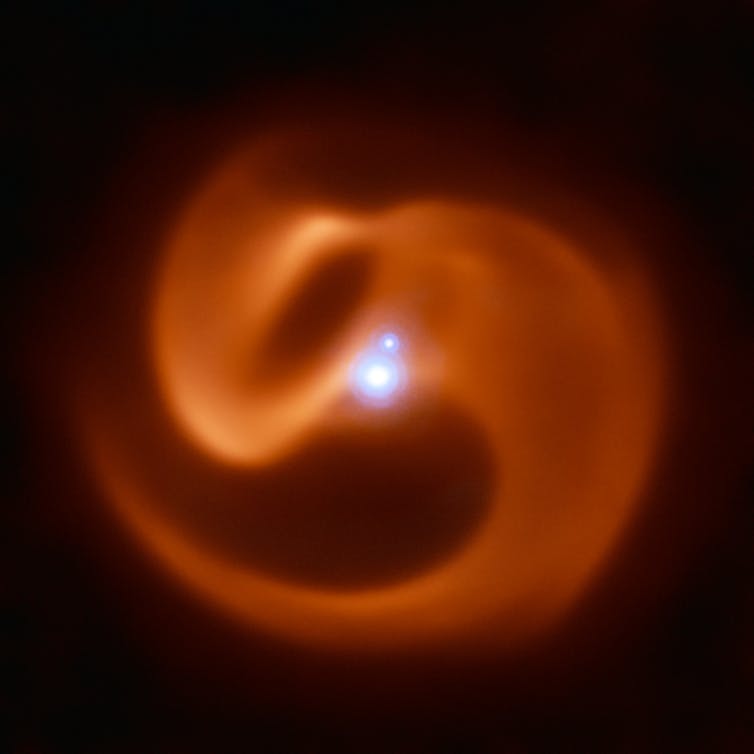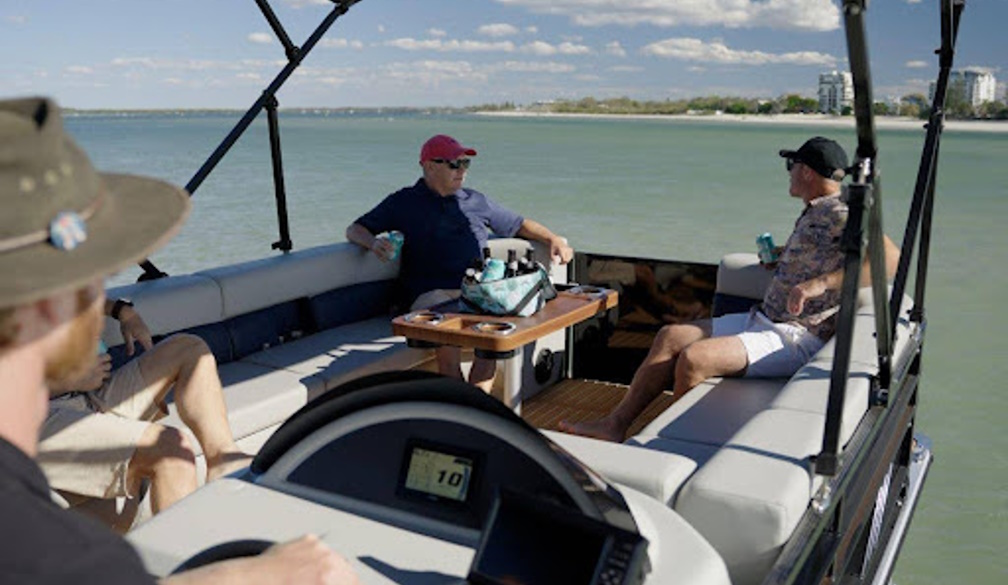Swirling nebula of two dying stars revealed in spectacular detail in new Webb telescope image
- Written by Benjamin Pope, Associate Professor, School of Mathematical and Physical Sciences, Macquarie University

The day before my thesis examination, my friend and radio astronomer Joe Callingham showed me an image we’d been awaiting for five long years – an infrared photo of two dying stars we’d requested from the Very Large Telescope in Chile.
I gasped – the stars were wreathed in a huge spiral of dust, like a snake eating its own tail.
We named it Apep, for the Egyptian serpent god of destruction. Now, our team has finally been lucky to use NASA’s James Webb Space Telescope (JWST) to look at Apep.
If anything could top the first shock of seeing its beautiful spiral nebula, it’s this breathtaking new image, with the JWST data now analysed in two papers on arXiv.
Violent star deaths
Right before they die as supernovae, the universe’s most massive stars violently shed their outer hydrogen layers, leaving their heavy cores exposed.
These are called Wolf-Rayet stars after their discoverers, who noticed powerful streams of gas blasting out from these objects, much stronger than the stellar wind from our Sun. The Wolf-Rayet stage lasts only millennia – a blink of the eye in cosmic time scales – before they violently explode.
Unlike our Sun, many stars in the universe exist in pairs known as binaries. This is especially true of the most massive stars, such as Wolf-Rayets.
When the fierce gales from a Wolf-Rayet star clash with their weaker companion’s wind, they compress each other. In the eye of this storm forms a dense, cool environment in which the carbon-rich winds can condense into dust. The earliest carbon dust in the cosmos – the first of the material making up our own bodies – was made this way.
The dust from the Wolf-Rayet is blown out in almost a straight line, and the orbital motion of the stars wraps it into a spiral-shaped nebula, appearing exactly like water from a sprinkler when viewed from above.
We expected Apep to look like one of these elegant pinwheel nebulas, discovered by our colleague and co-author Peter Tuthill. To our surprise, it did not.
Equal rivals
The new image was taken using JWST’s infrared camera, like the thermal cameras used by hunters or the military. It represents hot material as blue, and colder material in green through to red.
It turns out Apep isn’t just one powerful star blasting a weaker companion, but two Wolf-Rayet stars. The rivals have near-equal strength winds, and the dust is spread out in a very wide cone and wrapped into a wind-sock shape.
When we originally described Apep in 2018, we noted a third, more distant star, speculating whether it was also part of the system or a chance interloper along the line of sight.
The dust appeared to be moving much slower than the winds, which was hard to explain. We suggested the dust might be carried on a slow, thick wind from the equator of a fast-spinning star, rare today but common in the early universe.
The new, much more detailed data from JWST reveals three more dust shells zooming farther out, each cooler and fainter than the last and spaced perfectly evenly, against a background of swirling dust.
New data, new knowledge
The JWST data are now published and interpreted in a pair of papers, one led by Caltech astronomer Yinuo Han, and the other by Macquarie University Masters student Ryan White.
Han’s paper reveals how the nebula’s dust cools, links the background dust to the foreground stars, and suggests the stars are farther away from Earth than we thought. This implies they are extraordinarily bright, but weakens our original claim about the slow winds and rapid rotation.
In White’s paper, he develops a fast computer model for the shape of the nebula, and uses this to decode the orbit of the inner stars very precisely.
He also noticed there’s a “bite” taken out out of the dust shells, exactly where the wind of the third star would be chewing into them. This proves the Apep family isn’t just a pair of twins – they have a third sibling.
Understanding systems like Apep tells us more about star deaths and the origins of carbon dust, but these systems also have a fascinating beauty that emerges from their seemingly simple geometry.
The violence of stellar death carves puzzles that would make sense to Newton and Archimedes, and it is a scientific joy to solve them and share them.
Authors: Benjamin Pope, Associate Professor, School of Mathematical and Physical Sciences, Macquarie University



















